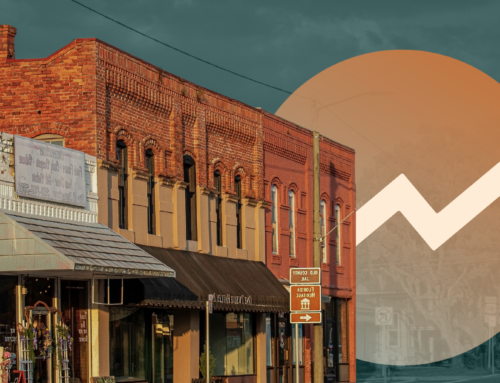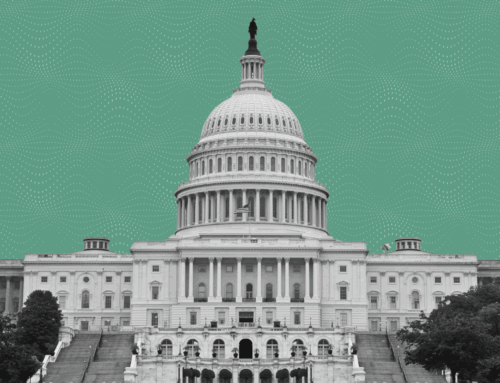Legislation includes a number of longstanding EIG recommendations
Washington, D.C. – The Economic Innovation Group (EIG) applauds the introduction of bipartisan legislation to strengthen the Opportunity Zones (OZ) incentive, institute reporting and transparency measures, and ensure that the policy can better support the recovery of low-income communities in the wake of the pandemic. The Opportunity Zones Transparency, Extension, and Improvement Act was introduced today by Senators Cory Booker (D-NJ), Tim Scott (R-SC), Mark Warner (D-VA), Chris Van Hollen (D-MD), Todd Young (R-IN), and Representatives Ron Kind (D-WI-03), Mike Kelly (R-PA-16), Terri Sewell (D-AL-07), Dan Kildee (D-MI-05), and Jackie Walorski (R-IN-02), and features a number of longstanding EIG recommendations that are supported by a diverse array of stakeholders nationwide.
“Supporting economic growth in low-income communities remains an urgent challenge as the country recovers from the severe disruption of the pandemic. One powerful way to do that is to strengthen the Opportunity Zones incentive, which has proven to be an effective tool for encouraging investment in struggling areas throughout the country” said John Lettieri, President and CEO of the Economic Innovation Group. “The Opportunity Zones Transparency, Extension, and Improvement Act would enhance the policy on multiple fronts, including by enacting careful reporting and measurement standards, strengthening the incentive to draw in greater investment, creating new ways to attract funding for high-impact activities, and refining the map of designated communities to better align with the intent of the law. EIG applauds the bill’s sponsors for their thoughtful, bipartisan leadership in bringing this important legislation to fruition.”
This new bill includes the following improvements:
- Reporting and community measurement requirements: The bill incorporates the bipartisan IMPACT Act (S.2994) to establish robust reporting and outcomes measurement standards related to the incentive and performance of designated communities. It would require the Department of the Treasury to publish an annual report on national OZ activity that includes aggregated data on such factors as the number of qualified funds, total assets held by qualified funds, and the distribution of OZ investments. It further requires Treasury to examine the performance of designated OZ communities over time by comparing key socioeconomic indicators in designated communities to those in low-income communities that were eligible but not designated. These reports would be issued in the 6th and 11th years after the date of enactment.
- Early sunset Opportunity Zones with high median family income: The bill would remove Opportunity Zones designation for tracts that have a median family income (MFI) of 130 percent of the national median family income or greater, thereby preventing new investments in such tracts from being eligible for the tax incentive. In general, Opportunity Zones rank as high-need communities across most measures of socioeconomic well-being, as confirmed by a 2021 Government Accountability Office (GAO) report. However, a small percentage of tracts originally nominated by governors and designated by the Secretary of the Treasury have an MFI that exceeds 130 percent of the national average. States will have the opportunity to replace the sunset tracts with new designations.
- Extend the deadline for OZ investment: The legislation extends the deadline for qualifying investments to the end of 2028 and changes the length of time required to receive the full step-up in basis from seven years to six years. These changes would recoup time lost during regulatory implementation and create a stronger incentive for investment in low-income communities in the wake of the pandemic.
- Allow fund-of-fund investments: The legislation allows intermediary investments into feeder funds to enable more investments into smaller Qualified Opportunity Funds. Allowing feeder funds will permit the pooling of smaller investments to make impactful and diversified OZ investments.
- Designate certain formerly industrial brownfield tracts: The bill includes the Rust to Revitalization Act (H.R.7183) introduced by Representatives Dan Kildee (D-MI-05) and Dutch Ruppersberger (D-MD-02) that would designate certain zero population census tracts as Opportunity Zones provided that they are adjacent to an existing OZ, formerly used for industrial purposes, and contain a brownfield site.
- Create a federal fund for state and local community resources: The bill would establish a $1 billion State and Community Dynamism Fund to be allocated to states to support activities such as technical assistance and local capacity building, pre-development investments into community-oriented OZ projects, and risk mitigation for Qualified Opportunity Funds.
The congressional statement can be found here.
About the Economic Innovation Group (EIG)
The Economic Innovation Group (EIG) is a bipartisan public policy organization dedicated to forging a more dynamic and inclusive American economy. Headquartered in Washington, DC, EIG produces nationally-recognized research and works with policymakers to develop ideas that empower workers, entrepreneurs, and communities.






